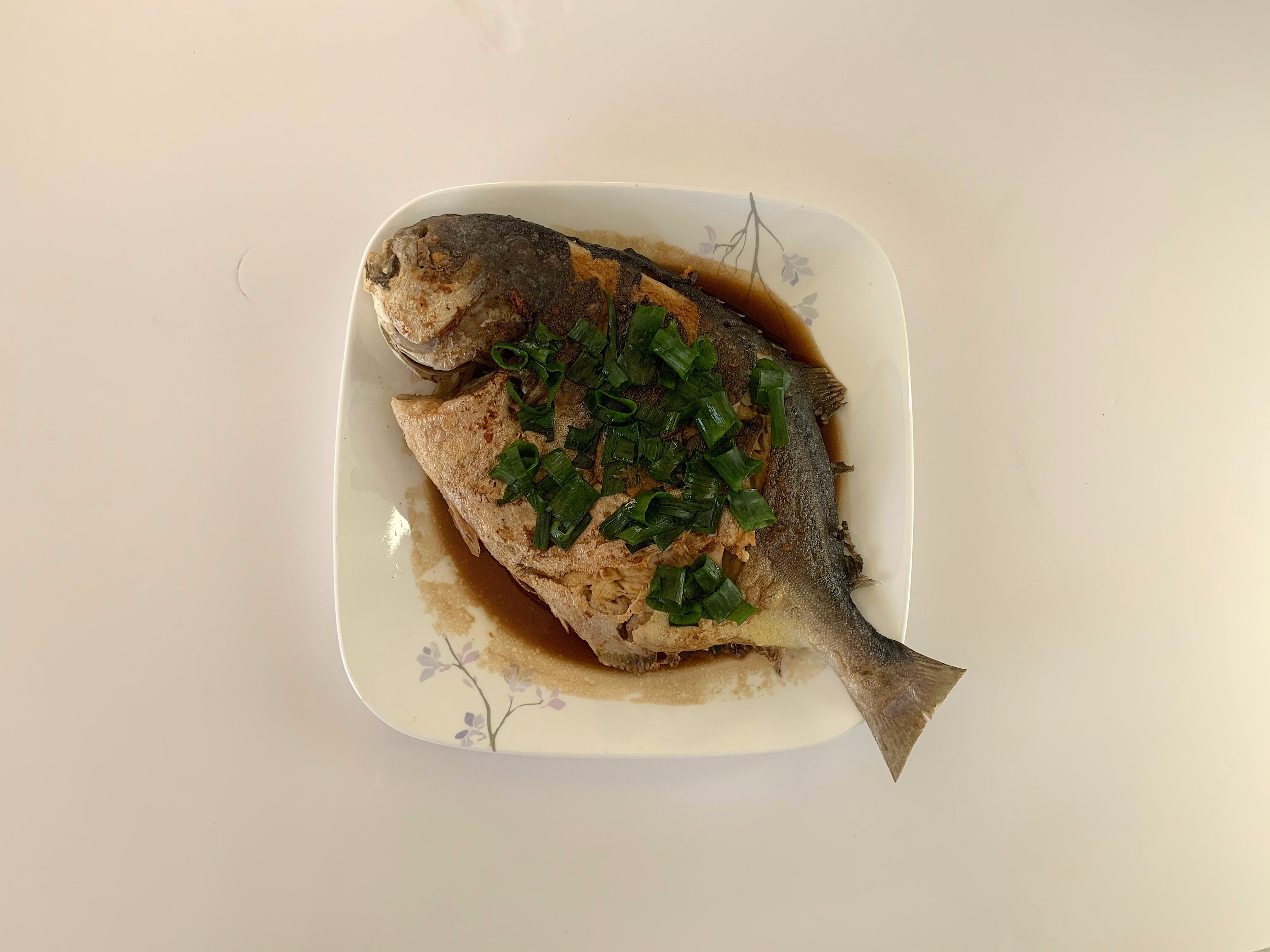Lunar New Year is one of the most popular and important Asian holidays celebrated on the first day of the lunar calendar, which happens to be Feb. 12 this year. Many countries have their own special way of celebrating Lunar New Year. A significant aspect of each country’s culture is the food, so I made a traditional New Year dish from three countries: China, Vietnam, and South Korea.
Fish:
A popular dish to make during Chinese New Year is fish. Since the Chinese word for “fish,” “yu,” sounds like the word for abundance, eating fish during the New Year symbolizes abundance and wealth for the coming year. It’s also important to serve the fish whole, which signifies a good beginning and ending. Additionally, since “yu” also sounds similar to the word for “leftovers,” some of the fish is saved for the next day to strengthen the wish for abundance throughout the whole year.
I followed my mom’s recipe to make this dish. I first sliced the fish and put ginger inside the cuts, fried the fish in a wok, then added soy sauce, oyster sauce, and sugar. After around 15 minutes, I plated the fish and sprinkled some green onions as garnish.
Despite the few ingredients, this dish burst with flavor. The combination of soy sauce and oyster sauce with the slightest hint of sweetness from the sugar was delectable, to say the least. Since the fish was pan-fried, it had a crunchy exterior that went well with the soft interior. This dish only took around 35 minutes to make, so it’s a quick and easy dish to make during New Year’s.
Bánh tét:
Bánh tét is a common dish eaten in central and southern Vietnam during the Vietnamese New Year, Tết. This dish includes a roll of glutinous rice, mung beans, and pork wrapped in banana leaves, representing the sky and heaven. Bánh tét shows the importance of rice, a staple in Vietnam’s economy and cuisine. Due to the lengthy and labor-intensive process that it takes to make each bánh tét, families usually gather together to make this dish.
To make bánh tét, I followed a recipe by food blogger RunAwayRice. After soaking the glutinous rice and mung beans in water and marinating the pork belly overnight, I made a log of mung beans with a pork belly center. When the mung bean log was frozen, I wrapped the mung beans in a layer of rice, then wrapped this with banana leaves and tied it securely with kitchen twine. After freezing the banana leaf log overnight, I then boiled the bánh tét for four hours and then chilled it overnight.
Although the bánh tét took four days to make, all the time and effort that I spent making the bánh tét was worth it. Because of the wrapped layers, you are met with a new flavor and texture with each bite that you take of this filling dish. The first bite consisted of the sticky rice; the next was the crumbly and earthy mung beans, and then in the third bite, you’re met with a savory pork belly center. To make this dish taste even better, you can pan-fry slices of the bánh tét. Pan-frying the bánh tét adds a toasty flavor and crispy exterior that contrasts nicely with the sticky rice.
Tteokguk:
Tteokguk is a traditional dish eaten during the Korean New Year, Seollal. “Tteok” means “rice cake” and “guk” means “soup” in Korean, so as the name suggests, tteokguk is a soup with slices of rice cake that’s usually topped with seaweed, spring onion, and slices of fried egg. Eating a bowl of tteokguk on New Year’s Day is supposed to turn you a year older as the white rice cakes symbolize purity, cleanliness, and new beginnings. Since the rice cakes are coin-shaped, they also represent success and prosperity.
Following a recipe from Korean-food YouTuber Maangchi, I added pieces of beef brisket and garlic to a pot of boiling water. While waiting for the beef to cook, I took two eggs and separated the egg whites from the egg yolks. Next, I pan-fried the egg yolks and julienned the fried egg to make an egg garnish. After letting the beef cook for 20 minutes, I put the rice cake slices, fish sauce, and salt into the soup and let it cook for an additional seven minutes. I then added the egg whites, sesame oil, black pepper, and green onions into the soup. After putting the soup in a bowl, I topped the tteokguk with green onions and the egg slices.
This enjoyable dish is both warm and comforting. Despite using the fish sauce, it didn’t add any fishiness to the soup at all, instead providing a savory umami flavor that went well with the sesame oil. The chewy rice cakes soaked up some of the soup as well, giving a flavorful taste with each bite. The green onions added a bit of freshness and were a good addition as a garnish. Overall, tteokguk is a great dish to eat during the chilly New Year’s Day.
These are just a few of the dishes enjoyed by various cultures during Lunar New Year. Making these dishes is a great way to spend time with your family and celebrate this holiday together. Because of the pandemic, it may be difficult to visit family members during this time, but you can still stay safe and bond with your immediate family by cooking these tasty recipes together.

